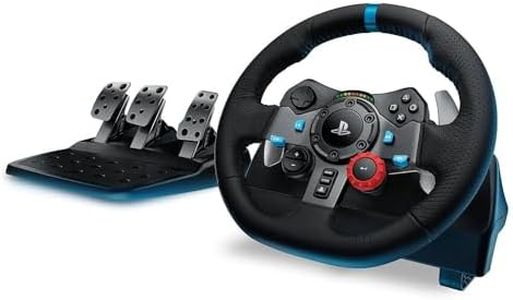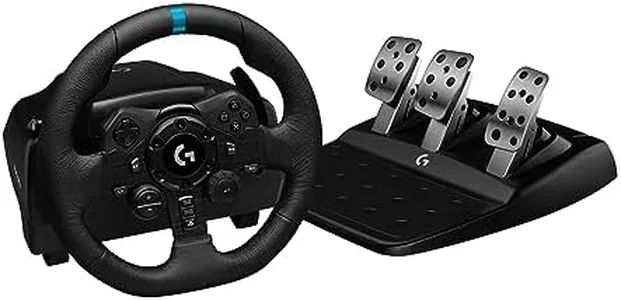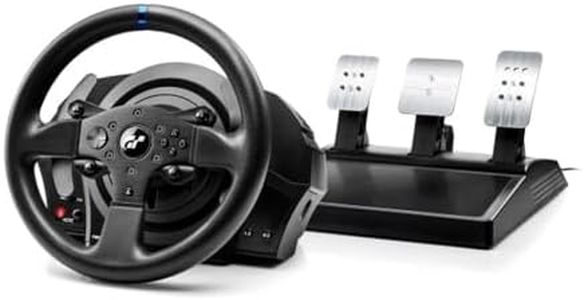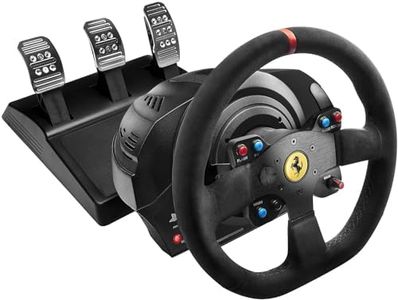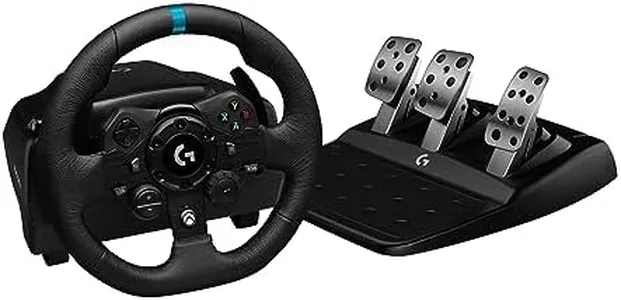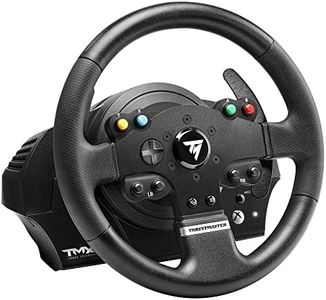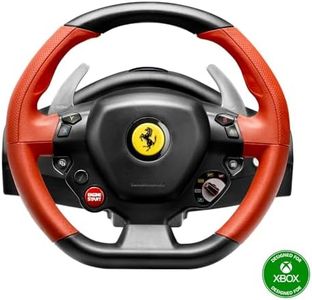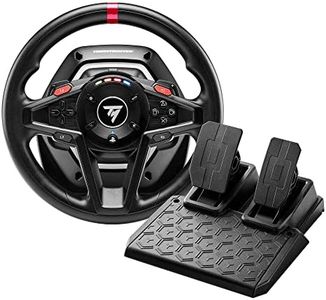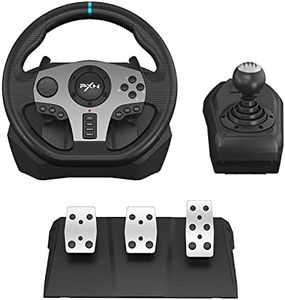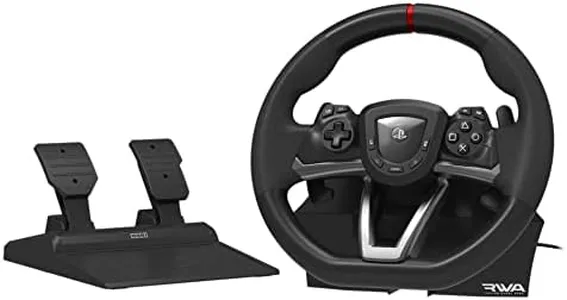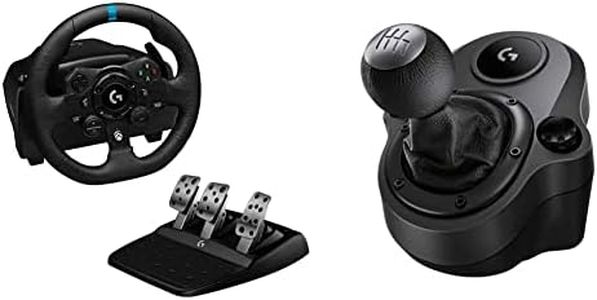We Use CookiesWe use cookies to enhance the security, performance,
functionality and for analytical and promotional activities. By continuing to browse this site you
are agreeing to our privacy policy
10 Best Sim Racing Wheel
From leading brands and best sellers available on the web.Buying Guide for the Best Sim Racing Wheel
Choosing a sim-racing wheel can be a fun but sometimes overwhelming process because there are so many options out there. Your main goal should be to find a wheel that feels comfortable, fits your gaming style, and matches the types of racing games you love. Think about where you will use it (desk or dedicated cockpit), the types of racing you enjoy (arcade, rally, formula, or GT), and whether you'll want to use it with a PC, a console, or both. The right sim-racing wheel can turn your gaming session into an immersive experience, and focusing on the specs that matter most to you is key.Force FeedbackForce feedback is the feature that allows the wheel to push back and create realistic resistance while you drive, simulating the feel of the road and car dynamics. This is important because it makes your gaming much more immersive and can actually improve your racing skills. There are generally three segments: wheels with no force feedback (which feel more like toys), basic force feedback with gears or belts (good for casual gamers), and high-end direct drive wheels (top-level realism and smooth feeling, best for enthusiasts). If you want lifelike sensation and detailed feedback, especially for competitive gaming, go for the best force feedback you can; if you play casually, simpler systems will be enough.
Rotation RangeRotation range refers to how far the wheel can turn from side to side, measured in degrees. More rotation means a more realistic steering experience, mimicking real cars. Basic wheels might offer about 270 degrees, mid-range ones up to 900 degrees, and high-end models can reach 1080 or more. If you play mostly arcade racers, less rotation is fine; for serious sim racing, especially with realistic cars, a higher rotation range feels more authentic.
Wheel Size and GripThe size and grip of the wheel affect comfort and realism. Larger wheels feel more like real car wheels, especially for GT or touring car games, while smaller ones may be better for formula or open-wheel racing. Look for a grip material (rubber, leather, suede) that feels comfortable for long sessions and doesn’t slip easily. Match your pick to what style of driving feels best to you and the gaming genres you prefer.
Pedal Set QualityA sim-racing wheel usually comes with pedals, and their quality can range from basic plastic pedals to sturdy metal ones with realistic resistance. Entry-level pedal sets may only have simple springs and lack adjustability, while higher-end pedals offer smoother travel, better grip, and features like load cell brakes (which respond to pressure, not just movement). If you care about braking accuracy and realism, aim for pedals that are responsive and adjustable.
CompatibilityCompatibility means what platforms your wheel will work with—PC, PlayStation, Xbox, or sometimes all three. Some wheels only work with specific consoles, while others are more universal. Make sure the wheel you pick matches the devices you plan to play on now and in the future, as compatibility is vital for flexibility and long-term use.
Mounting OptionsMounting options describe how you attach the wheel to your desk or rig. Some wheels are designed for quick and easy clamp-on setups, perfect for gamers who share their space, while others are made for permanent mounting to a racing stand or cockpit. If you need to pack your setup away after use, look for portability; if you're setting up a dedicated sim rig, robust mounting is more important.
